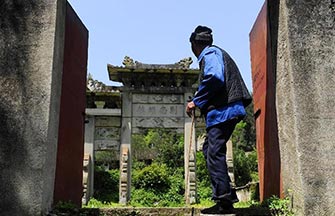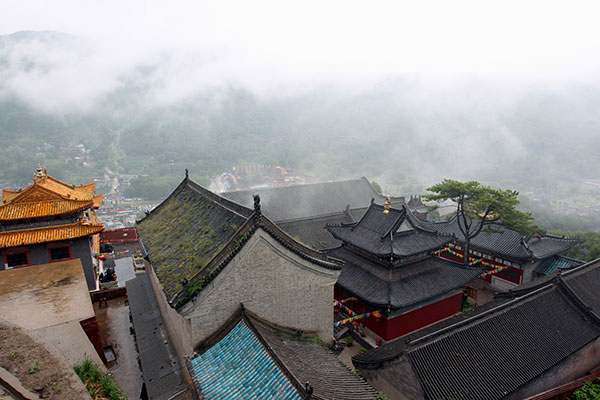 |
|
Wutai Mountain in fog. [Photo by Zhang Wei/China Daily]
|
I am taking in this scene at Tayuan Temple, which is the symbol of Wutai Mountain, one of four sacred Buddhist mountains in China (the others are Emei Mountain, Putuo Mountain and Jiuhua Mountain). Wutai Mountain lies in Wutai county, situated between Shanxi's capital Taiyuan and the city of Datong, in the northeast of the province. Wutai Mountain covers a little less than 3,000 square kilometers and has five peaks, located in the north, east, south, west and the center.
Earlier that morning,I left Taiyuan by bus and a mere five hours later arrived at Wutai Mountain. If the bus ride had taken longer I wouldn't have complained, as the views were stunning even though it rained all the way. Or maybe it was because of the rain? The low-hanging clouds over the mountains, a lonely cowboy sitting on his motorcycle keeping an eye on his cattle and the lush green mountains were breathtaking.
After the bus ride I felt like staying in my hotel room as the rain picked up and a thunderstorm rolled in to the mountain area. The idea of exploring the mountains and temples in the pouring rain didn't sound too inviting, especially as I had just found out the mountaintops were covered with snow just a few weeks earlier. However, I was convinced by our guide Li Jing to get out and explore a few of the best temples Wutai has to offer. Li took us to Pusa Ding, Xiantong Temple and Tayuan Temple — all of them impressive places of worship. All were built hundreds of years ago and they continue to be important places of worship.

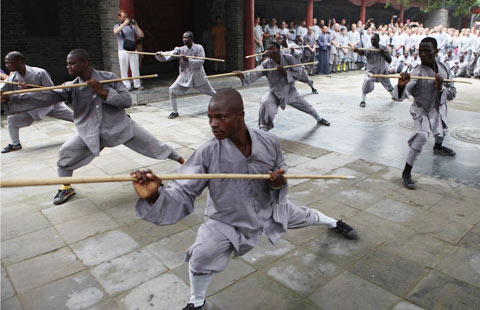



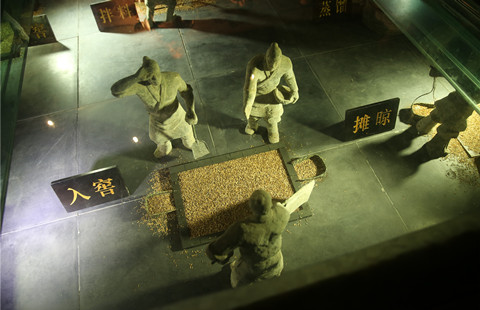



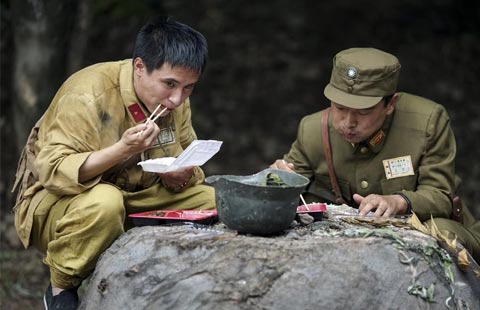













 Raymond Zhou:
Raymond Zhou: Pauline D Loh:
Pauline D Loh: Hot Pot
Hot Pot Eco China
Eco China China Dream
China Dream China Face
China Face



